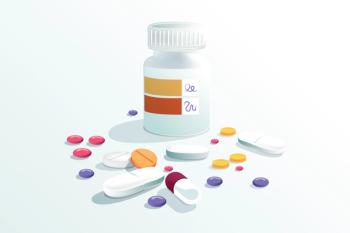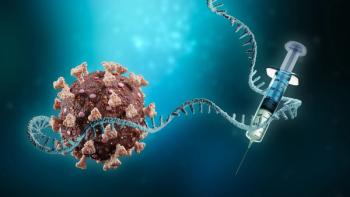
- MHE May 2023
- Volume 33
- Issue 5
Gene Replacement Therapy for Duchenne Muscular Dystrophy: The Race Is On
Sarepta Therapeutics and Roche are competing with Pfizer to develop the first gene replacement therapy for Duchenne muscular dystrophy. Sarepta and Roche are ahead after the FDA put a clinical hold on Pfizer’s product.
Duchenne muscular dystrophy (DMD) is a progressive, X-linked genetic disorder primarily affecting boys. It is the most common form of childhood muscular dystrophy, affecting about 1 in 3,500 male births worldwide. Mutations in the dystrophin gene result in dysfunctional or absent dystrophin protein, which plays a key role in maintaining muscle function. Without dystrophin, patients with DMD have chronic damage to muscle fibers during contraction, which leads to progressive muscle deterioration.
DMD symptoms typically start at about age 2 to 3. The muscle weakness usually starts in the pelvis and upper legs before spreading to the arms. When the muscle degeneration starts to affect the heart and breathing muscles, patients can experience cardiomyopathy and respiratory insufficiency. By age 12, most people with DMD are unable to walk.
Although there is no cure for DMD, advances in cardiac and respiratory care have helped to ease the symptoms, increase life expectancy and improve quality of life. Traditional pharmacological treatments include angiotensin-
converting enzyme inhibitors and beta blockers to prevent cardiomyopathy and corticosteroids to improve muscle and pulmonary function and delay loss of the ability to walk. These treatments do not address the underlying pathology of DMD, and heavy use of corticosteroids comes with a raft of undesirable side effects, including weight gain, stunted growth, behavioral changes, osteoporosis and bone fractures.
Skipping over exons
The available treatment strategies changed in 2016 when the FDA approved Exondys 51 (eteplirsen), the first treatment that dealt with more than just consequences of DMD. This approval was followed by Emflaza (deflazacort) in 2017, Vyondys 53 (golodirsen) in 2019 and Viltepso (viltolarsen) in 2020. Apart from Emflaza, which is an enhanced corticosteroid, all of these agents are exon-skipping therapies. They work by binding to exons — the sections of DNA that code for a protein — of the dystrophin gene that are responsible for mutated or absent dystrophin protein. By masking or silencing certain exons, they help produce truncated but partially functional dystrophin protein. Although not curative, exon skipping can lessen muscle weakness and deterioration in individuals who are amenable to the treatment. However, current treatments target only 8% to 13% of people with DMD, and they have been priced so the annual cost of treatment is close to $1 million.
Partly because of those high prices and partly because of scientific advances, the DMD pipeline today is replete with disease-modifying treatments with various mechanisms. They include additional exon-skipping therapies, cell therapy that could potentially encourage cell regeneration and gene replacement therapy. Other up-and-coming candidates include antifibrotics, anti-inflammatories, novel steroids and agents that could enhance muscle regeneration.
Replacing the gene
The exon-skipping therapies were the first disease-modifying treatments for DMD. However, these treatments are not curative, require regular intravenous infusions and treat only a small percentage of children with DMD. In contrast, the gene replacement therapies currently under investigation are designed as one-time treatments to essentially replace the defective dystrophin gene.
Gene therapy candidates use a recombinant adeno-associated viral vector to deliver microdystrophin, a shortened but functional version of the dystrophin gene, to the muscles.
Closest to approval is SRP-9001 (delandistrogene moxeparvovec), which was developed by Sarepta Therapeutics in partnership with Roche, the Swiss pharmaceutical giant. Sarepta, which is headquartered in Cambridge, Massachusetts, developed Exondys 51, Vyondys 53 and another exon-skipping therapy, Amondys 45 (casimersen). Sarepta and Roche reported positive results from phase 1 and 2 trials at one, two and four years after treatment. Based on these results and a favorable safety profile, the FDA accepted a biologics license application for accelerated approval and granted SRP-9001 priority review. The FDA is scheduled to announce whether it will approve the drug at the end of May.
Meanwhile, the companies have proceeded with the phase 3 EMBARK trial evaluating the safety and efficacy of SRP-9001 in children ages 4 to 7 with DMD. EMBARK is expected to be the post-marketing confirmatory trial, with results expected by the end of 2023.
Following SRP-9001 is Pfizer’s gene therapy, PF-06939926 (fordadistrogene movaparvovec), which has been held up by concerns about side effects and deaths. In May 2020, Pfizer announced a favorable safety profile and preliminary effectiveness of PF-06939926 in ambulatory patients. Later that year the FDA granted the product fast track designation and in March 2021, the study was expanded to include nonambulatory participants.
But in September 2021, Pfizer reported three cases of serious side effects that involved muscle weakness, including myocarditis. After determining that certain gene mutations increased the risk of these side effects, the company revised the study protocol to exclude patients with those gene mutations, which occur in about 15% of people with DMD.
Then, in December 2021, Pfizer announced the unexpected death of a child in the nonambulatory arm of the study, which led the FDA to place a hold on the trial. The company once again amended the study protocol to include a seven-day hospitalization period after receiving gene therapy.
In April 2022, the FDA lifted the clinical hold, and PF-06939926 is now in the phase 3 CIFFREO study evaluating its safety and efficacy in ambulatory patients with DMD. Pfizer and a data monitoring committee are still assessing whether it is safe to resume the study in nonambulatory patients.
Pfizer and Sarepta are competing to have the first gene replacement therapy for DMD, but Pfizer’s safety stumbles have perhaps put Sarepta’s therapy ahead. If these gene therapies are approved and prove to be successful, they might supplant the exon-skipping treatments. Advantages of gene therapy include one-time dosing and that the agents may be effective for a larger percentage ofpeople with DMD.However, gene replacement therapy is ultraexpensive. The cost is estimated at $2 million per patient year, which is double the cost of exon-skipping therapies.
Other medications
Italfarmaco, headquartered in Milan, Italy, is developing givinostat, a potential first-in-class oral histone deacetylase (HDAC) inhibitor for the treatment of DMD. It is thought that hyperactivity of HDAC may interfere with muscle regeneration. By inhibiting HDAC, givinostat might promote muscle regeneration and delay the worsening of the muscle weakening. Experts expect givinostat to be priced so the annual cost of treatment will be between $100,000 and $300,000.
Other treatments that may delay disease progression include a type of cell therapy involving cardiosphere-derived cells (CDCs). CDCs are stromal (connective tissue) cells derived from the cells of healthy human hearts. Capricor Therapeutics, a biotechnology company based in Los Angeles, is evaluating the safety and efficacy of CAP-1002, a CDC-based cell therapy, for the treatment of DMD in ambulatory and nonambulatory participants 10 years and older with DMD.
Rosanna Sutherby, Pharm.D., is an independent medical writer and community pharmacist in High Point, North Carolina, and a regular contributor to Managed Healthcare Executive.
Articles in this issue
over 2 years ago
Biosimilars Fail to Deliver on Insulin Pricingover 2 years ago
Men Are Reluctant Patientsover 2 years ago
With PHE Over, Teleprescribing Regulatory Landscape Shiftsover 2 years ago
In Iowa, Audits and Lawsuits Plague Medicaid Managed Careover 2 years ago
Hackers Have a New Tool in Their Toolbox: Smishingover 2 years ago
Physicians Band Together to Fend Off Private-Equity Firmsover 2 years ago
Are Virtual-First Health Plans Headed to the Front of the Line?Newsletter
Get the latest industry news, event updates, and more from Managed healthcare Executive.



















































